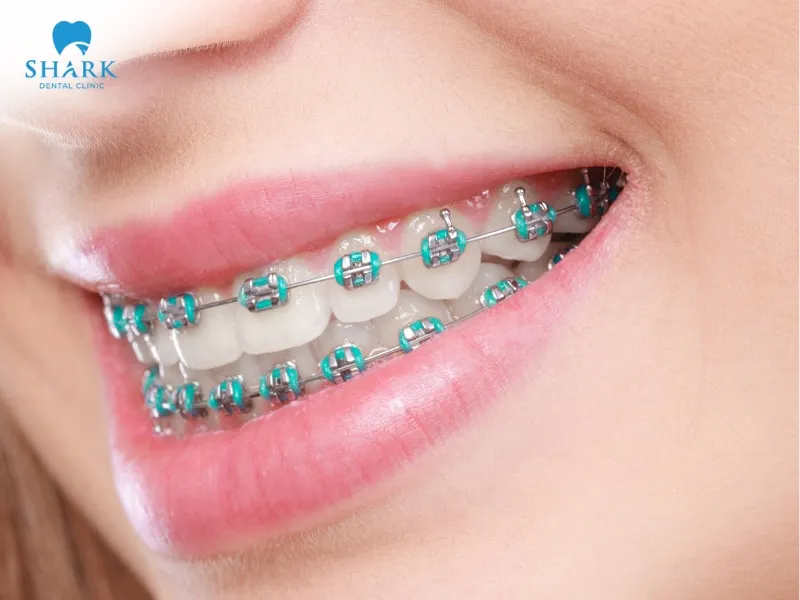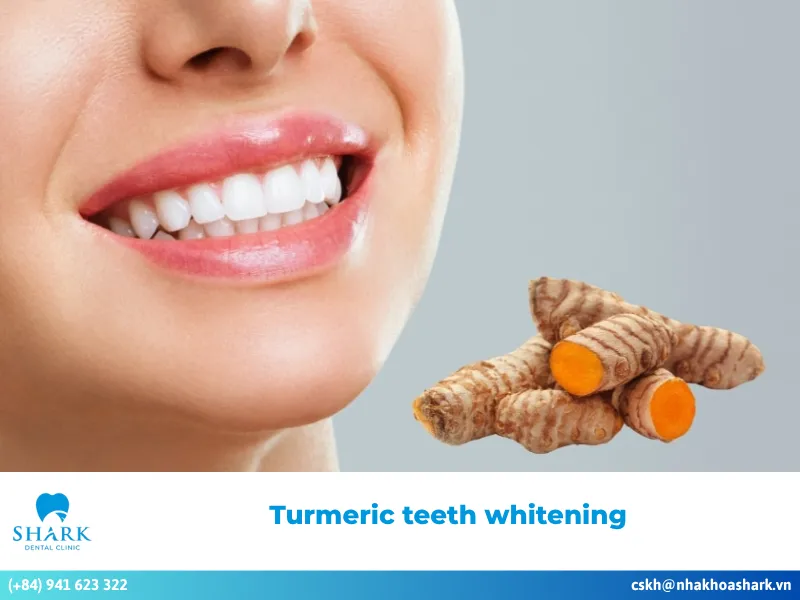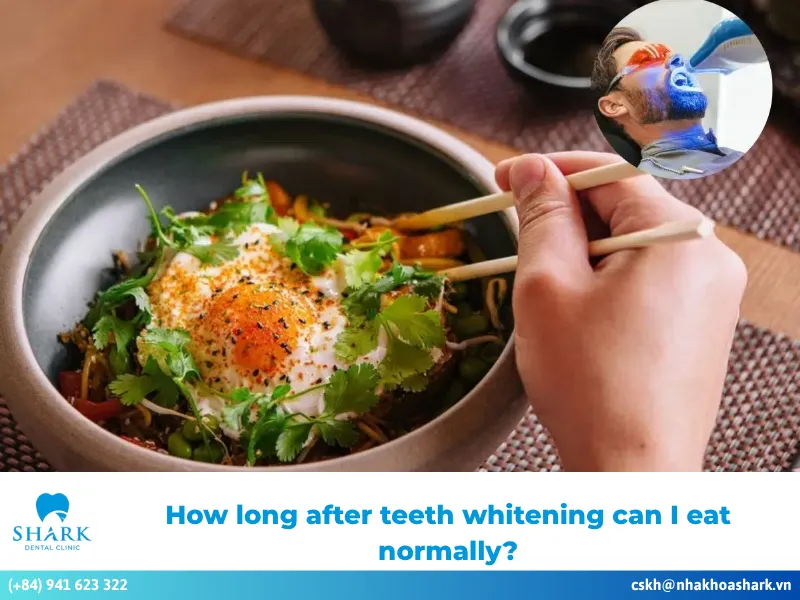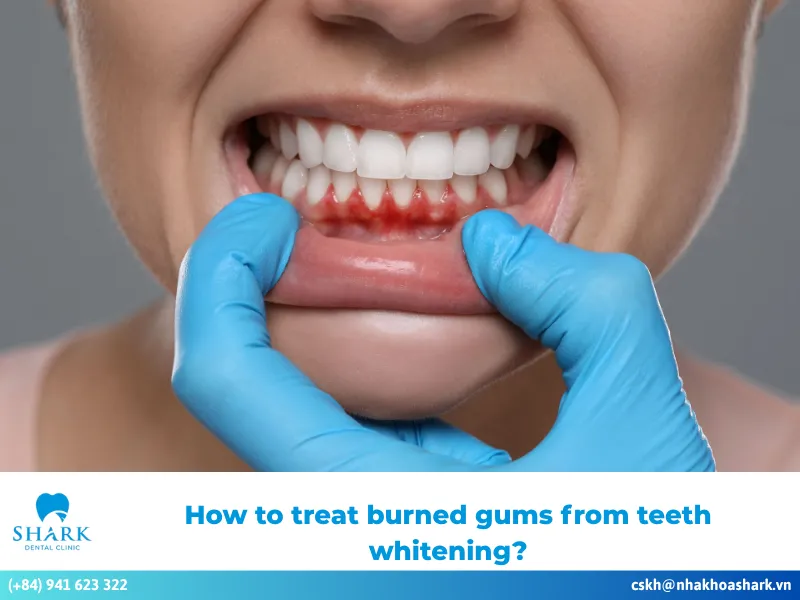Using whitening strips to achieve a bright, even smile is a popular method nowadays. However, some people notice tiny white spots on their teeth after using the strips, which can affect aesthetics. So, what causes white spots on teeth after whitening strips, and how can you effectively fix them?
What causes white spots on teeth after whitening strips?
Small white spots that appear on the surface of teeth after using whitening strips can impact both aesthetics and indicate potential oral health issues. Here are some common causes of white spots on teeth after whitening with strips:
- Enamel demineralization: For individuals seeking teeth whitening for sensitive teeth, strong bleaching agents in standard whitening strips can lead to a loss of essential minerals like phosphate and calcium from the enamel. This weakening of the enamel can create a porous surface that reflects light differently, making small white spots visible.
- Pre-existing white spots: Some white spots may have already existed before whitening but were less noticeable due to tooth discoloration or yellowing. Once the teeth are whitened, these pre-existing spots can become more apparent.
- Fluoride exposure: Fluoride is commonly found in toothpaste and drinking water. For those sensitive to fluoride, excessive exposure can sometimes lead to mild fluorosis, which manifests as white patches or streaks on the enamel.
- Dehydration: Active ingredients like hydrogen peroxide or carbamide peroxide in whitening strips can draw moisture from the enamel. This dehydration can result in uneven light reflection, leading to temporary white spots on the tooth surface.
- Overly strong whitening concentration: Whitening strips with a high concentration of bleaching agents can damage enamel. These potent chemicals may penetrate deeply, disrupting tooth structure and causing tiny white spots when light interacts with them.
- Diet and oral hygiene: After whitening with strips, consuming dark-colored foods or drinks—such as coffee, curry, or carbonated beverages—can easily lead to new stains, diminishing the whitening effect and overall appearance.
- Remineralization imbalance: A long-term imbalance in mineral content can lead to uneven coloration and patches of white areas on the enamel surface.
- Braces history: Individuals who have worn metal braces or clear aligners are at a higher risk of developing white spots on their teeth. This condition accounts for approximately 23.4% of all reported cases of white spots after using whitening strips.

How long do white spots on teeth after whitening strips?
White spots can last anywhere from a few days to several weeks or even longer if not properly addressed. The duration depends on the condition of the enamel, underlying causes, and daily oral hygiene habits.
If white spots appear due to dehydration or dryness, they usually fade within 2 to 4 days as the enamel naturally rehydrates. However, if severe enamel demineralization is the cause, these spots may persist longer and may not disappear completely without professional dental intervention.

How to get rid of white spots on teeth after whitening strips
White spots on teeth can affect your smile and may indicate potential oral health issues. If you notice tiny white spots appearing on the surface of your teeth, it’s important to determine the cause and take appropriate corrective measures.
- Use specialized toothpaste: After whitening, your enamel may become weaker and more susceptible to white spots. Using toothpaste that contains fluoride can help remineralize the enamel and restore its strength. Brush your teeth consistently 2–3 times a day to gradually fade the white spots and even out the color of your teeth.
- Mouth rinsing: For mild cases with faint and limited white spots, consider rinsing your mouth daily with an antibacterial mouthwash. This not only cleans your oral cavity but also helps reduce bacteria, fight inflammation, and improve the appearance of white spots and discoloration.
- Enamel remineralization: If regular brushing doesn’t help fade the white spots, consult your dentist about professional remineralization treatments. A dentist can apply a fluoride or calcium phosphate solution to restore enamel and effectively minimize the white spots.
- Microabrasion: In some cases, if the white spots are localized on the outer surface of the tooth, your dentist might recommend microabrasion. This involves gently removing a thin layer of enamel using a mild acidic solution, which can help eliminate the affected area without harming the underlying tooth structure.
- Enamel coating: This popular technique can yield positive results for visible white spots. The dentist applies a thin, transparent resin layer over the affected areas, creating a uniform and naturally bright tooth color.
- Oral hygiene habits: After using whitening strips, it’s crucial to maintain good oral hygiene. Brush your teeth 2–3 times a day, limit dark-colored foods, and avoid smoking or alcohol. You should begin to see an improvement in the appearance of white spots within a few days.

While white spots on teeth after professional whitening are common and usually harmless, they typically fade naturally within a few days. However, if the white spots persist, contact your dentist for a proper evaluation and timely treatment!
What if the white spots don’t go away?
If the white spots persist for 1 to 2 weeks without any signs of fading, this may indicate significant enamel demineralization and damage. At this point, regular brushing or mouthwash will no longer be effective, and it’s important to visit a trusted dental clinic.
During your appointment, your dentist will examine your teeth using X-rays and enamel scans to assess the extent of the damage. Once the cause of the white spots is identified, the dentist will recommend an appropriate treatment plan, which may include:
- Professional enamel remineralization: For long-standing white spots, professional remineralization is necessary. This procedure uses mineral-rich solutions containing phosphate, calcium, and fluoride ions to rebuild the enamel structure and reduce the appearance of white spots. After 1 to 2 remineralization sessions, your teeth will look smoother and whiter overall.
- Transparent enamel coating with ultra-fine polishing: This technique involves applying a clear resin layer over the damaged enamel while performing a gentle micro-polish. After several sessions, the white spots blend in naturally, restoring an even tooth shade.
- Fluoride application with LED light: Fluoride helps strengthen enamel against acids, enhances remineralization, and speeds up the fading of white spots. This treatment involves combining fluoride with LED light activation to reinforce the enamel structure and achieve long-lasting whitening results.

In more severe cases where the white spots remain visible, aesthetic restoration methods such as porcelain crowns or veneers may be considered. These treatments use customized porcelain shells that match the color of your natural teeth, effectively improving discoloration and achieving a uniform, radiant smile.
It’s not unusual to experience white spots after using whitening products. It’s important to schedule regular dental checkups and inform your dentist immediately if you notice any unusual changes. Your dentist will carefully assess your oral health and recommend safe, effective solutions.
This article has outlined the causes and treatment options for white spots on teeth after whitening strips. We hope this information helps you care for and protect your teeth for a healthy, confident smile.










